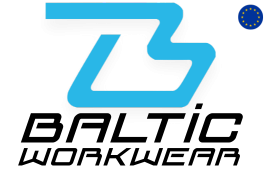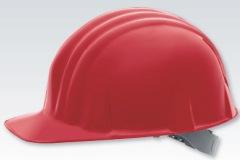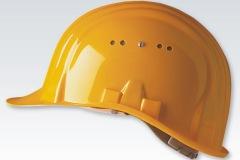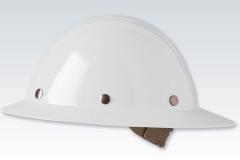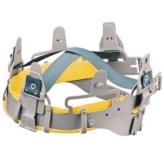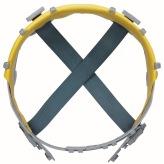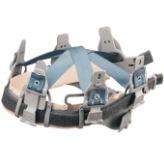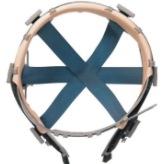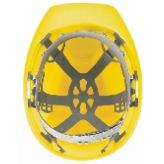- today
- label Guide
- favorite 0 likes
The dangers of falling objects, as well as head bumping against protruding structural parts or moving objects, can injure the scalp, skull bones, vertebrae and brain. Head injuries ranks third in the frequency of injuries, and approximately 12% of reported workplace accidents are head injuries. As many as 28% of fatal accidents are caused by head injuries. The use of protective helmets can protect against the above-mentioned hazards. Read our article and find out what safety helmets should meet.
Types of protective helmets
In colloquial terms, the terms "protective helmets" or construction helmets are used. However, this is not in line with the nomenclature used in the standards. Protective helmets are specially designed for specific workplaces, taking advantage of the specific properties of the materials from which they are made and their design features.
The most common types of protective helmets are:
- construction and industrial helmets,
- helmets for working at height,
- helmets for sewers,
- helmets for miners,
- helmets for foresters,
- helmets for electricians,
- helmets for steelworkers.
In many workplaces, such as mining, energy, construction or forestry, there are threats to the head of the employee. Mechanical injuries are among the most serious of these risks. The main task of the helmets is to protect the user's head against:
- Blows from falling objects
- Impacts against stationary dangerous objects at the workplace,
- Transversely acting compressive forces,
- and additionally against open flame, splashes of molten metal, electric shock.
Safety helmets that meet the requirements of PN-EN 397: 1997 can also be used as a base structure for other personal protective equipment. For example, for eye and face shields, hearing protectors, neck protectors.
Industrial helmets vary in design, depending on their purpose. However, there are three common elements: the shell, the truss and the main belt. You can read about the construction of industrial safety helmets later in the text.
Protective helmets - basic legal norms
Protective helmets are governed by two basic legal norms:
- EN 397 - Industrial protective helmets - the standard specifies technical parameters as well as physical requirements, test methods and requirements for marking protective helmets used in industry. Mandatory and additional requirements are laid down.
- EN 812 - Industrial light helmets - this standard specifies the physical requirements, test methods and technical parameters that apply to the marking of light industrial helmets protecting against impacts. They do not protect against the effects of impacts, falling objects or against suspended or moving loads. They only protect against hitting the head against hard and stationary objects with such force that may cause superficial wounds or tear the skin. These are occupational health and safety articles that must not be confused with industrial safety helmets, which are covered by the EN 397 standard.
Construction of industrial safety helmets
Industrial safety helmets may differ in design depending on their intended use. Common core elements can be listed regardless of these differences.
- the shell - it is the outer part of the helmet that gives shape. The main task of the shell is to take over the impact, partially absorb its energy and transfer the rest of the energy to the truss. The second task is to protect the head from sharp objects. The shell can be equipped with vents, brim, gutter, visor, ear-muffs or face shields. Currently, thermoplastics (polyethylene, ABS) or duroplastic laminates (phenolic resin with textile fiber, polyester resin with glass fiber) are used for the production of shells.
- harness - folds into the inner part of the helmet, is attached to the shell and is in direct contact with the user's head. Its task is to absorb the impact received by the shell. In addition, it aims to distribute the acting forces over the largest possible area of the upper part of the head. The truss straps are most often made of woven polyamide or polyester tapes.
- main belt - covers the user's head at the level of the forehead and at the base of the skull. It enables the helmet to be firmly mounted on the head in connection with the harness. On the inside of the main belt, there is a sweatband that absorbs sweat from the forehead. Can be attached to the main belt with a chin strap. It also prevents the helmet from falling off the head. The circumference of the main belt is adjustable and can be adjusted to the head circumference by turning the knob or by means of the hooks.
Examples of the execution of shells and trusses can be found in the table below:
|
|
|
|
|
Straight shell without a gutter |
|
Simple shell with a gutter |
|
|
|
|
|
|
|
|
|
Helmet with lowered occipital part |
|
Helmet with a widened rim |
|
|
|
|
|
|
|
Helmet with a four-point textile harness |
||||
|
|
|
|
|
|
|
|
|
|
|
|
|
Helmet with a six-point textile harness |
||||
|
|
|
|
|
|
|
|
|
|
|
|
|
Helmet with a six-point harness made of polyethylene |
||||
In addition to industrial safety and light helmets, there are also highly effective safety helmets available on the market. They are designed to protect the employee in the event of a risk of being hit by high-energy falling objects with sharp edges. In addition, they protect against impacts with the extra-shadow part of the head against dangerous objects at the workplace. They meet the requirements of PN-EN 14052: 2006 (U).
Do you want to know more? Also read our article - how important is the right choice of a safety helmet?
See our offer in the rotective helmets category.
